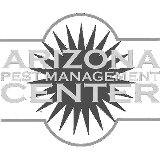Recently, a sample of different species of sprangletop weed was sent to me by a PCA for identification purposes, highlighting the importance of accurately recognizing this troublesome group of grassy weeds. Sprangletop can appear similar across various species, but correct identification is crucial for effective management and herbicide selection. Sprangletop species belong to the genus Leptochloa and are generally summer annuals or short-lived perennials that thrive in wet or irrigated environments, often impacting specialty crops, orchards, and rangelands. The most common types you may encounter include Mexican sprangletop (Leptochloa fusca ssp. uninervia), green sprangletop (Leptochloa dubia), and bearded sprangletop (Leptochloa fascicularis).
Key Identification Features
- Mexican Sprangletop: Characterized by a dense, dark-colored panicle that extends beyond the leaf blades. The flower spikelets are tightly clustered and lack awns, resulting in a compact seed head. This species grows as an annual or short-lived perennial in moist soils and irrigated fields. Leaves have linear blades with a sometimes hairy ligule.
- Green Sprangletop: A perennial bunchgrass with a large, spreading, and nodding panicle composed of slender, well-separated branches. Leaf sheaths may turn purplish, and the ligules are hairy. This species prefers drier upland sites compared to Mexican sprangletop.
- Bearded Sprangletop: Distinguished by short, needlelike awns at the tips of flowers and a more open panicle structure. Leaves are flat and rough, with a jagged, membranous ligule. This species is more common in wet areas like rice fields and irrigation ditches.
Practical Tips
When inspecting sprangletop, focus on panicle shape and density, spikelet arrangement, and the presence or absence of awns. Note leaf blade length and texture as well as sheath color. Ligule characteristics—whether hairy, membranous, or jagged— can also aid identification. Correctly identifying the specific sprangletop type helps tailor weed control strategies, especially herbicide selection, since control efficacy can vary among species. For growers and PCAs encountering sprangletop challenges, collecting samples and seeking expert identification support is highly recommended, as illustrated by the recent field sample I received. Understanding these distinctions enhances integrated weed management efforts and supports cleaner, more productive crops.

| Mexican sprangletop (Leptochloa fusca ssp. uninervia) |
Green sprangletop (Leptochloa dubia) |

Bearded sprangletop (Leptochloa fascicularis) Source: https://weedid.missouri.edu/weedinfo.cfm?weed_id=473
References:
- https://ipm.ucanr.edu/PMG/WEEDS/bearded_sprangletop.html
- https://turf.caes.uga.edu/pest-management/weeds/grass-likeweeds/sprangletop.html
- https://cales.arizona.edu/yavapaiplants/SpeciesDetailGrass.php?genus=Leptochl oa&species=dubia
- https://cales.arizona.edu/crops/vegetables/advisories/more/weed39.html





